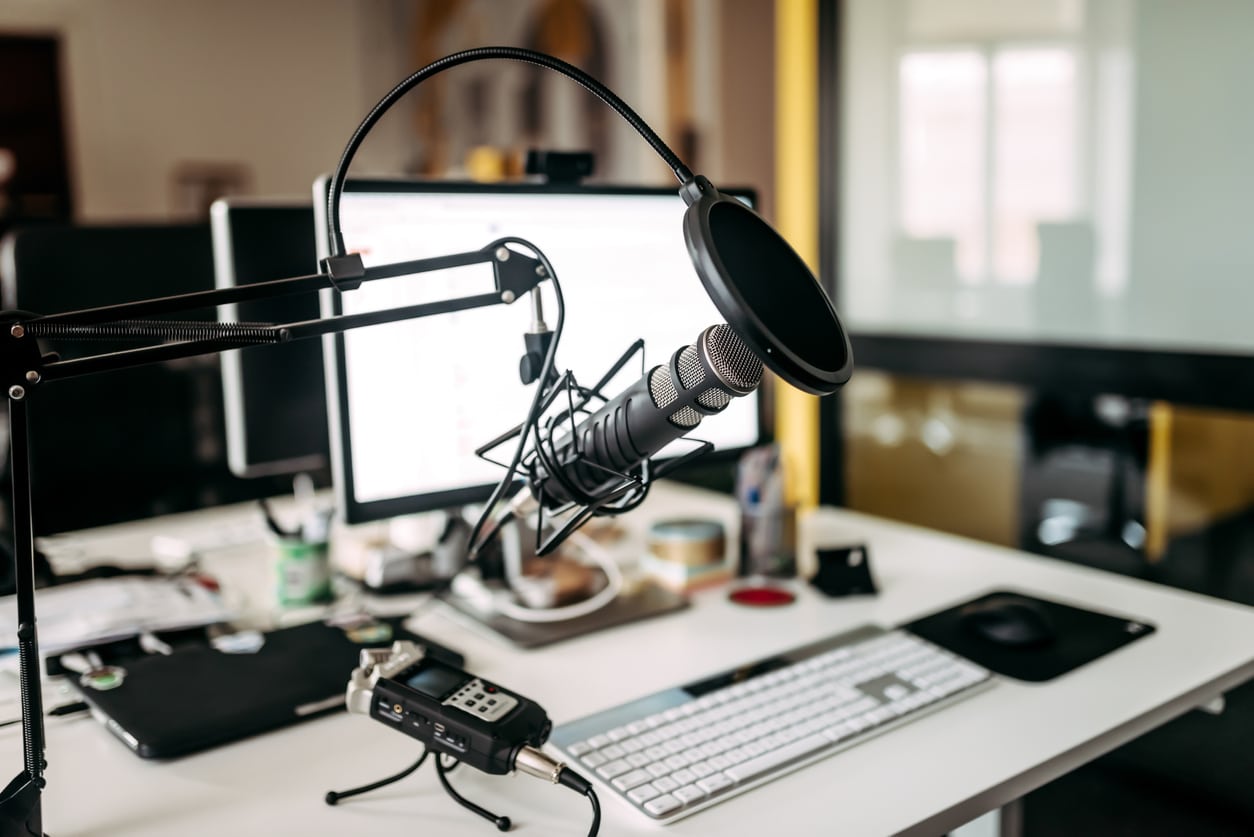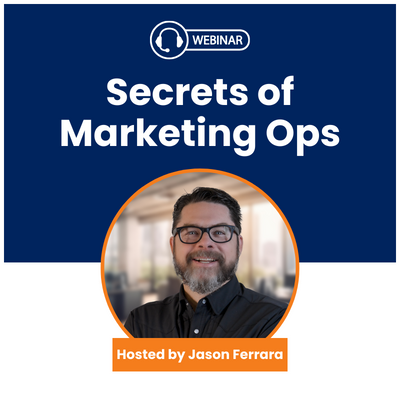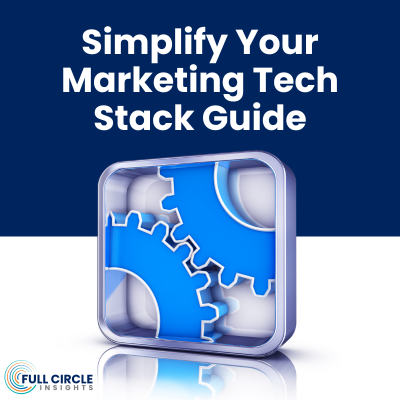For this blog post, we have guest contributor Ryan Gould, Vice President of Strategy and Marketing Services at Elevation Marketing. He’s very experienced and well-researched in the effective use of podcasts and webinars.
Where do Podcasts and Webinars Fit Within the Marketing Funnel?
Marketers are quick to invest in the tried and true methods of attracting leads, such as landing pages, paid ads, blog posts, social posts and emails. While these tools do a fine job of building attraction and driving attention, there are two more marketing vehicles gaining traction that both show promise for the years ahead— podcasting and webinars.
While a blog post can do an excellent job of teaching your audience through writing, a podcast or webinar allows you to explain right from your lips to your listener’s ears. With webinars, you can pinpoint what you’re doing and show your screen, while podcasting allows you to take listeners on a mental journey, which hopefully culminates in a boost to your bottom line.
If you are keen to use podcasting and webinars in your marketing funnel, you may be wondering where the two mediums best fit. Here is a rundown of each as well as insight into ways you can infuse podcasts and webinars into any ongoing marketing campaign.
Storytelling with Podcasts
Podcasts were originally designed for the long forgotten iPod when this talk-show-like medium started taking the marketing world by storm. In 2006, few knew what a podcast was, but this figure rose to 60% in 2017. Most recently, 96% of respondents aged 18 to 29 and 93% of those 60 or older had at least heard of a ‘cast. But the most stunning statistic is the fact that nearly a quarter of the population admitted to listening to a podcast in the past month in 2017, which is an increase from less than 10% in 2008.
People appreciate podcasts because they allow them to meet new personalities, each with their own storytelling brand. Advertisers are realizing the power of podcasting, as well, but many advertisers don’t yet know how to approach podcasting, ambitious brands had better learn to acclimate.
Nielsen reports that 50% of all homes are podcast fans (over 60M homes!).
According to Edison Research, monthly podcast listeners grew from 21% to 24% last year with the audience remaining around 18 to 54, mostly male; though women make up 44% of total podcast listeners.
Podcast listeners are affluent and educated and are more likely to gravitate toward ad-free or ad-light subscription models.
Where do they listen? At home mostly, though listening in a vehicle comes in a close second.
According to Podcast Insights, podcast listeners are more active on social media, with 94% active on at least one channel vs. 81% for the entire population. Listeners are more likely to follow brands on social, and comedy, then education, and then news are the most popular ‘casting genres.
And if you’re trying to target prospects with deep pockets, you’ll like the fact that podcast listeners earn $10K more than non-listeners.
The Power of Podcast Marketing
People entering your marketing funnel want to know more about you and how you can help. What a way to introduce your brand than a talking format where you can guide the story any way you like?
Many different narratives and styles can drive podcasts such as skit-based, newsroom-style, interview style and more. This is your chance to show your audience that you are heads and shoulders above the competition, that your products and services are reliable and top-notch, and that you are an authority in your field.
Podcasts can be advertised on your blog, on social, in emails, and in videos for added exposure. In other words, used correctly, podcasts can be tailored to fit into any stage of the marketing funnel, and can be advertised with every other campaign element for maximum reach.
Building Your Brand with Webinar Marketing
Like podcasts, webinars allow you to use your natural voice to interact with your audience. Unlike podcasts, which are primarily audio (though some podcast stars do film their episodes and release the videos on YouTube to draw even more attention to the brand), many webinars are video-based. Some people like to show their faces on their webinars while others merely provide a slide-show while explaining each slide in detail behind-the-scenes.
Webinars should follow a few best-practices to appease the most people. They should be between 30 and 45 minutes long, and there should never be lulls. That means that each moment of the webinar should be infused with excitement and information. Easier said than done. The more you practice, the better your webinars will become.
Here are other rules to abide by with your first of many webinars to follow.
- Not Too Often: People who attend webinars will only commit to one webinar per week, so don’t overdo it. Hosting the occasional webinar, no more than once per month is fine, and a subscription model will ensure they keep coming back!
- Ideal in the Morning: The best time to host a webinar is 10 or 11 o’clock in the morning, with the latter being preferred by 26% of viewers.
- Go Mid-Week: Tuesdays are statistically the best days to host a webinar, with Wednesday coming second and Thursday coming third. Mondays are reserved for recovering from the weekend and Friday is for preparing for the weekend. That sweet spot in the middle is when your audience is most likely to pay attention.
- Answer Questions & Help: 92% of webinar attendees want a live answer session at the end of the webinar. Here’s your chance to show your audience what you’ve got while swaying fence-sitters with your experience and expertise.
- Expect Late-Comers: 29% of attendees won’t register for your webinar until the day of the event. In fact, only 17% will sign up more than 15 days before the big day, a full half of all people who will attend.
Where Does a Webinar Fit in the Marketing Funnel?
Since few will be beating down your doors to register and attend, the burden of promotion is on you – and promote the heck out of your webinar you should. A long promotion cycle is recommended if you hope to attract the most leads. Blog posts advertising the webinar and hinting at the contents, social media posts building hype, and emails to serve as constant reminders will go a long way toward keeping your seats filled.
And, just like podcasts, webinars can be used throughout your marketing funnel. They can be used as product demonstrations in place of a video. They can solve an important problem in place of a white paper, allow you to showcase your expertise better than any blog; And when it comes to building familiarity, even the most personalized email can’t come close to webinars at making your audience feel like part of your tribe.
Conclusion
As you can see, podcasts and webinars can and should be included at every stage of your marketing funnel. Podcasts are more of an ongoing commitment – such as once per week – while webinars can be a one-off or occasional tactic. With the average webinar attendance at 148 and 67M Americans listening to podcasts each month, your marketing funnel is about to get a whole lot better, stronger, and more expansive, thanks to your growing listeners and subscribers.
Hungry for more?
Learn more about podcasts, webinars, and B2B marketing at www.elevationb2b.com.




